
In September of 2017, I received slightly over $100K from my former employer which represented the commuted value of my pension plan. I decided to invest 100% of this money in dividend growth stocks.
Each month, I publish my results on those investments. I don’t do this to brag. I do this to show my readers that it is possible to build a lasting portfolio during all sorts of market conditions. The market will inevitably go down, as it did last year. But I continued to enjoy cashing consistent and growing dividends despite that negative market action! And, most importantly, I stayed fully invested in the market and have enjoyed the market recovery in 2020 that has continued into this new year of 2021.
As you know, I also take the opportunity during my monthly income report to add some relevant market commentary. This time, I answer common rapid-fire questions that I got from you!
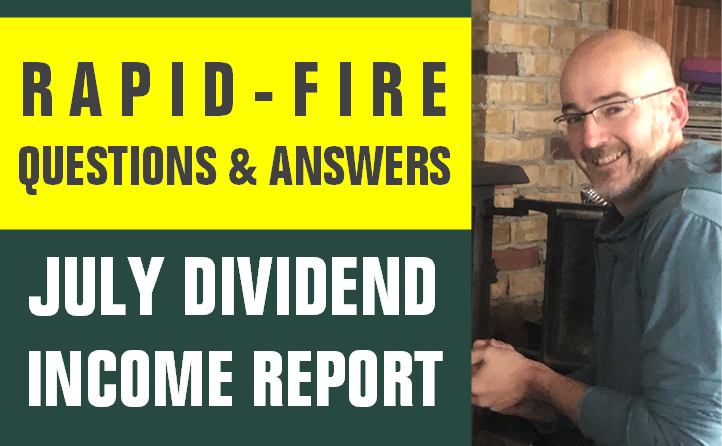
Performance in Review
Let’s start with the numbers as of August 2nd, 2021 (before market open):
Original amount invested in September 2017 (no capital added): $108,760.02.
- Portfolio value: $215,416.11
- Dividends paid: $3,949.62 (TTM)
- Average yield: 1.83%
- 2020 performance: +20.3%
- SPY=18.17%, XIU.TO = 5.27%
- Dividend growth: +7.7%
Total return since inception (Sep 2017- June 2021): 98.07%
Annualized return (since September 2017 – 47 months): 19.06%
SPDR® S&P 500 ETF Trust (SPY) annualized return (since Sept 2017): 17.86% (total return 90.36%)
iShares S&P/TSX 60 ETF (XIU.TO) annualized return (since Sept 2017): 11.64% (total return 53.93%)
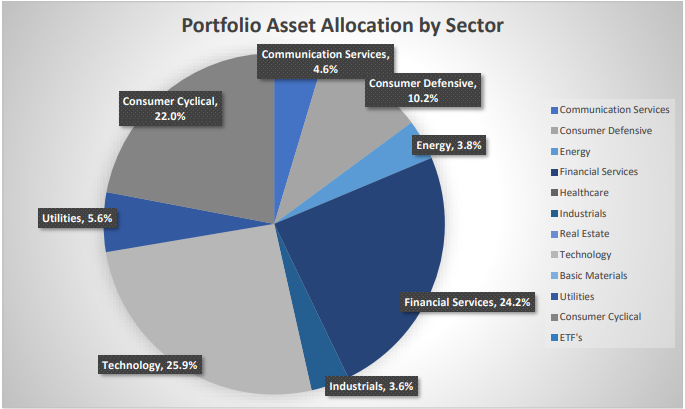
Sector allocation calculated by DSR PRO.
Rapid-Fire Questions & Answers
Since the market crisis of March 2020, I decided to do monthly webinars. Each time, I spend about 1-hour answering questions. I thought of making a short version of my answers to classic questions that keep coming back. Please note that these answers will likely never change.
For Canadians, should I invest in the U.S. market?
Don’t mind the currency factor. Canada doesn’t host international companies such as Johnson & Johnson, 3M, Procter and Gamble, Microsoft, Apple, Lockheed Martin, McDonald’s, Wal-Mart, etc. The U.S. market is the world’s largest stock playground, and it includes opportunities that can’t be found in any other markets. For diversification and total return, one must consider the U.S. market. I aim at having at least 50% of my total portfolio invested in U.S. stocks, and preferably in retirement accounts to avoid withholding taxes.
Why don’t you invest in ETFs?
ETFs are great in many ways. They allow you to invest a small amount of money at a very low cost. On top of that, investors enjoy instant diversification, and they can even select specific sectors or strategies (such as dividend investing) to build their portfolios. However, I dislike ETFs because I have no control on their holdings. Each time I look at their top 10 or 25 holdings, I find companies that don’t fit with my investment strategy (e.g., companies I wouldn’t invest in). Plus, so far, I have been able to beat my ETF benchmarks (VIG and XDV.TO).
More on Dividend vs ETFs.
What do you think of gold to protect your portfolio?
Gold is a bet on fear and is likely going to work well temporarily when the market drops. However, it’s a non-productive asset. I would rather protect my portfolio with robust dividend growers. Outstanding companies usually keep increasing their dividends during a market crisis and come back stronger during the recovery. Finally, gold hasn’t done very well since its peak price in the early ’80s. That’s more than 40 years of bad returns for the same asset class.
More on that in this gold video.
How many stocks should an investor have in a portfolio?
This depends on your will, time, and interest to follow your holdings. I think that any number between 20 and 40 makes sense. Under 20 stocks, you take the risk of not having enough diversification. Over 40, you increase the risk of “diworsification” (such as having 6 Canadian banks) and you are getting closer and closer to an ETF. Plus, you will eventually lack the time to follow each company on a quarterly basis and may miss important news that could affect your performance.
Do you use covered calls?
No, but I want to look at this strategy. Generating extra income from your portfolio with this strategy sounds appealing, but I haven’t taken enough time to review the strategy completely. I’ve noticed that covered call ETFs will often generate good yields but will also make you leave a lot of money on the table. In other words, you may pay a high price by missing the total return to get a higher yield.
What about DRIPs?
Dividend Reinvesting Plans are a great way to set your portfolio on autopilot. You already like the stock and then, you are simply buying more each time the company pays a dividend. That’s a great strategy. Personally, I prefer receiving dividends in cash as I use this extra money to buy new positions or to rebalance my portfolio. I think both strategies work very well.
How often should one trade?
Ah! That’s a tricky question! The whole idea of dividend growth investing is about holding your stocks as long as possible. In fact, I only sell companies when they don’t meet my investment thesis anymore. Therefore, I will likely trade once or twice per year. A big trading year might include 4-5 trades while I may not sell anything for a full 12 months. The point is to remain patient and not become trigger-happy.
Should I wait for the next market crash to invest?
I would never do that. Unless the market crash happens in the next 6 months, you are likely to leave a lot of money on the table waiting for that crash. Plus, waiting creates more doubt in your mind. Every market drop of 5% or more will be a moment of dilemma (is it the big crash you were waiting for or just a small correction?). It makes it very difficult to invest at the right time. I’ve done some calculations to discern the impact of waiting with 30% or 50% in cash when I received my pension plan check-in 2017.
Here are the results of waiting here.
Let’s look at my CDN portfolio. Numbers are as of August 2nd, 2021 (before the bell):
Canadian Portfolio (CAD)
| Company Name | Ticker | Market Value |
| Algonquin Power & Utilities | AQN.TO | 6,739.32 |
| Alimentation Couche-Tard | ATD.B.TO | 18,054.11 |
| Andrew Peller | ADW.A.TO | 5,221.26 |
| National Bank | NA.TO | 7,639.20 |
| Royal Bank | RY.TO | 7,570.80 |
| Brookfield Renewable | BEPC.TO | 1,164.68 |
| CAE | CAE.TO | 7,614.00 |
| Enbridge | ENB.TO | 7,917.98 |
| Fortis | FTS.TO | 5,601.42 |
| Intertape Polymer | ITP.TO | 8,331.00 |
| Magna International | MG.TO | 7,322.00 |
| Sylogist | SYZ.TO | 5,400.15 |
| Cash | 62.05 | |
| Total | $88,637.97 |
My account shows a variation of +$507.91 (+0.58%) since the last income report on July 5th. Since there are lots of reports from my U.S. stocks, I’ll report my Canadian holdings’ earnings summary in September. However, I added a new position to my portfolio!
Added 22 shares of Brookfield Renewable (BEPC.TO) @ $49.06
I reinvested all the dividends paid recently into a new position. I’ve been wanting to add Brookfield Renewable to my portfolio for a while and the recent stock price drop made for the perfect opportunity. Plus, it helps me boost my exposure to utilities in my portfolio which is quite low right now.
The future of energy will be in hydroelectric, solar, and wind power. 64% of BEP’s portfolio is focused on hydroelectric power. The company has power plants across North America, South America, Europe, and Asia. BEP enjoys large-scale capital resources and the expertise to manage its projects across the world. Management aims at a 5-9% annual distribution increase. What will happen in the coming years is more money will be going toward those projects. Investors are following the green trend and BEP is well-positioned to attract them. BEP now offers shares under both REIT and regular corporate structures. From what we have observed, the C class (BEPC) tends to attract more investors and has supported a stronger price.
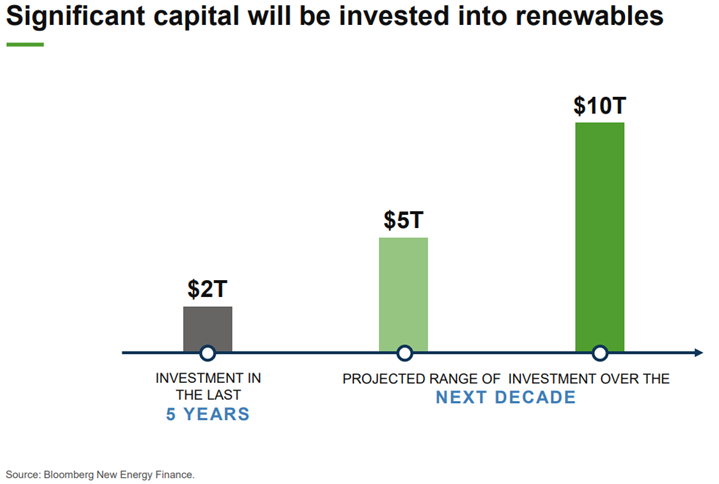
Source: BEP investors day presentation
Here’s my US portfolio now. Numbers are as of August 2nd, 2021 (before the bell):
U.S. Portfolio (USD)
| Company Name | Ticker | Market Value |
| Apple | AAPL | 14,002.56 |
| BlackRock | BLK | 12,140.38 |
| Disney | DIS | 7,920.90 |
| Gentex | GNTX | 7,997.05 |
| Lazard | LAZ | 4,814.40 |
| Microsoft | MSFT | 17,094.60 |
| Starbucks | SBUX | 10,321.55 |
| Texas Instruments | TXN | 9,531.00 |
| VF Corporation | VFC | 6,496.20 |
| Visa | V | 12,319.50 |
| Cash | 22.82 | |
| Total | $101,690.98 |
The US total value account shows a variation of $975.98 (+0.96%) since the last income report on July 5th.
There were many of my companies who reported earnings in July. Here are some interesting results.
The market is never happy with Apple
AAPL reported solid numbers with double-digit growth for both EPS and revenue. Sales were strong across all segments: iPhone (+50%), Mac (+16%), iPad (+12%), Wearables (+36%) and services (+33%). During the quarter, AAPL generated $21B of operating cash flow and returned nearly $29B to shareholders. Unfortunately, analysts wanted more. Many were disappointed since AAPL didn’t provide guidance for the next quarter. On the conference call, Apple said sales will grow double digits but less than the +36% this quarter. Overall, we think Apple proved once again its ability to generate strong cash flows and therefore we like this business.
BlackRock total assets under management become “indecent”
BLK reported double-digit growth everywhere and beat the markets’ expectations. However, the market is now getting greedy, and the stock was down on earnings day. Results were supported by a strong performance of its active platform and iShares ETF franchise. Q2 total net inflows of $81B reflected a previously announced $58B low-fee institutional index outflow related to a single client; compares with $172B total net inflows in Q1. Assets under management is getting close to $10T (currently at $9.5T). If the market is bullish, BLK will do just fine.
Gentex is getting affected by the chips shortage
Gentex’s results look amazing (revenue up 86%), but that was mostly related to the lockdown of 2020. However, when compared to the mid-April 2021 IHS Markit light vehicle production forecast in the Company’s primary regions, actual light vehicle production in the second quarter of 2021 declined approximately 1.1 million units, or 7% because of industry-wide parts shortages and global supply chain constraints. The company will suffer from the chips shortage through the rest of the year. This could be a very good time to grab some shares as the stock is now trading around a PE ratio of 18.
Lazard: Amazing results, no dividend growth!?!
Lazard impressed the market with solid results this past quarter. Q2 financial advisory operating revenues surged 61% Y/Y as Lazard has been engaged in significant and complex M&A transactions and other advisory assignments globally including Vivendi’s distribution of 60% of Universal Music Group shares (valued at €19.8B). Q2 Asset Management operating revenue reported a 40% Y/Y increase to a record $343M; average AUM rose 32% to $276B. We were disappointed to see that management didn’t increase the dividend despite amazing results. If LAZ maintains its current dividend through the end of the year, we will have to revise our dividend safety score to 2.
Same old, same old for Microsoft
Microsoft reported another excellent quarter with double-digit growth everywhere. Revenue from Productivity and Business Processes was $14.7 billion and increased 25% on continuing strength in Office Commercial and Office 365. LinkedIn revenue increased by 46% during this period. Revenue from Intelligent Cloud was $17.4 billion and increased 30% with Azure up 51%. Revenue from More Personal Computing was $14.1 billion and increased 9% despite Xbox revenue going down by 4% and Surface down by 20%. We can feel the chip shortage in the video game industry!
Wake up and smell the coffee!
Starbucks beat both EPS and revenue growth expectations. Global comparable store sales increased 73%, driven by a 75% increase in comparable transactions, partially offset by a 1% decrease in the average ticket. The company opened 352 net new stores in the third quarter of fiscal 2021, yielding 3% year-over-year unit growth while ending the period with a record 33,295 stores globally. Starbucks Rewards loyalty program’s 90-day active members in the U.S. increased to 24.2M, up 48% year-over-year. That is amazing considering that the membership program didn’t drop off during the lockdown in 2020. Management demonstrated their confidence by raising their guidance for the year.
It’s never enough for Texas Instruments
It’s funny how the markets react sometimes. On earnings day, TXN was down even though it beat both EPS and revenue growth expectations. Analog revenue grew 6% and Embedded Processing grew 2% sequentially. From a year ago, Analog revenues grew 42% and Embedded Processing grew 43%. While the growth vs last year is mostly related to the COVID lockdown in 2020, TXN shows a sequential revenue increase of 7% vs last quarter. For the next quarter, TXN forecasts revenues of $4.4 – 4.76B compared to the $4.59B consensuses. Adjusted EPS is expected to come in between $1.87 and $2.13 versus the $1.97/share estimate.
VF Corp did better than expected, yet the stock goes sideways
VF corporation beat both EPS and revenue growth expectations, but the stock price dropped on earnings day. Direct-to-Consumer revenues increased 97% including a 27%-point revenue growth contribution from acquisitions. Management is confident in the coming quarters and raised their guidance. For the full year of 2022, VFC expects revenue growth of 30% (to $12B) including $600M coming from their latest acquisition, Supreme. They also expect EPS of $3.20 with a contribution of $0.25 from Supreme. If the numbers continue to be good, I’m willing to be patient with this one.
My Entire Portfolio Updated for Q2 2021
Each quarter, we run an exclusive report for Dividend Stocks Rock (DSR) members who subscribe to our very special additional service called DSR PRO. The PRO report includes a summary of each company’s earnings report for the period. We have been doing this for an entire year now and I wanted to share my own DSR PRO report for this portfolio. You can download the full PDF showing all the information about all my holdings. Results have been updated as of June 2021.

Download my portfolio Q2 2021 report.
Dividend Income: $174.39 CAD (+143%% vs July 2020)
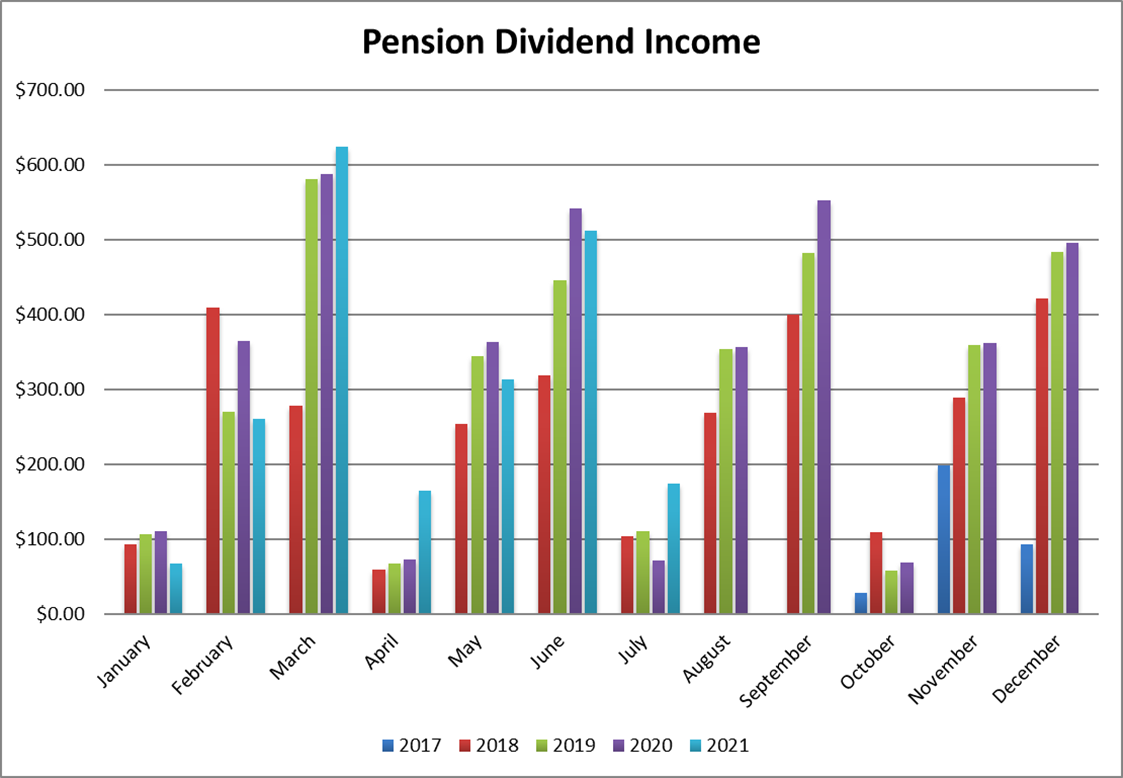
There is a big jump this month as I have made a few modifications to my portfolio since July 2020. First, I added shares of both Andrew Peller and Alimentation Couche-Tard over the past 12 months. Earlier this year, I also added Algonquin to my portfolio. It’s important to note that I didn’t add any money to this account. The additions came from reinvested dividends and the sale of previous positions (Hasbro’s sale to buy Algonquin).
Here’s the detail of my dividend payments.
Dividend growth (over the past 12 months):
- Andrew Peller: +61.4% (I added shares in 2020)
- Algonquin: New addition this year! K-Ching!
- Alimentation Couche-Tard: +161% (I added shares earlier this year)
- Gentex: 0% (I must follow up on this one later this year)
- Currency factor: -7.68%
Canadian Holdings payouts: $139.23 CAD
- Andrew Peller: $36.04
- Algonquin: $71.78
- Alimentation Couche-Tard: $31.41
U.S. Holding payouts: $28.20 USD
- Gentex: $28.20
Total payouts: $174.39 CAD
*I used a USD/CAD conversion rate of 1.2467
Since I started this portfolio in September 2017, I have received a total of $13,052.52 CAD in dividends. Keep in mind that this is a “pure dividend growth portfolio” as no capital can be added into this account other than retained and/or reinvested dividends. Therefore, all dividend growth is coming from the stocks and not from any additional capital.
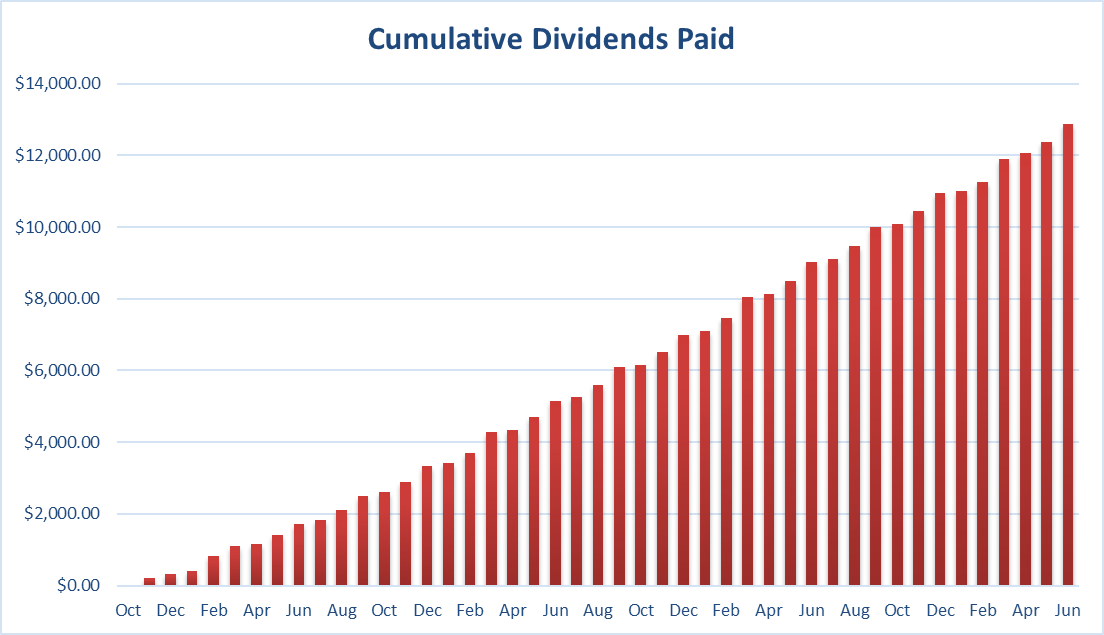
Final Thoughts
I’m getting very close to doubling my pension plan distribution from 2017! I hope that August will be good for us as it would be nice to show 100% growth in only four years. However, regardless of what happens in the coming weeks, I keep my eyes on the horizon. Four years of great performance is still not much in the scope of a full investor’s life. After all, I still have another 25 years before I even touch a single dollar from this account!
Cheers,
Mike.
The post Rapid-Fire Questions & Answers – July Dividend Income Report appeared first on The Dividend Guy Blog.
